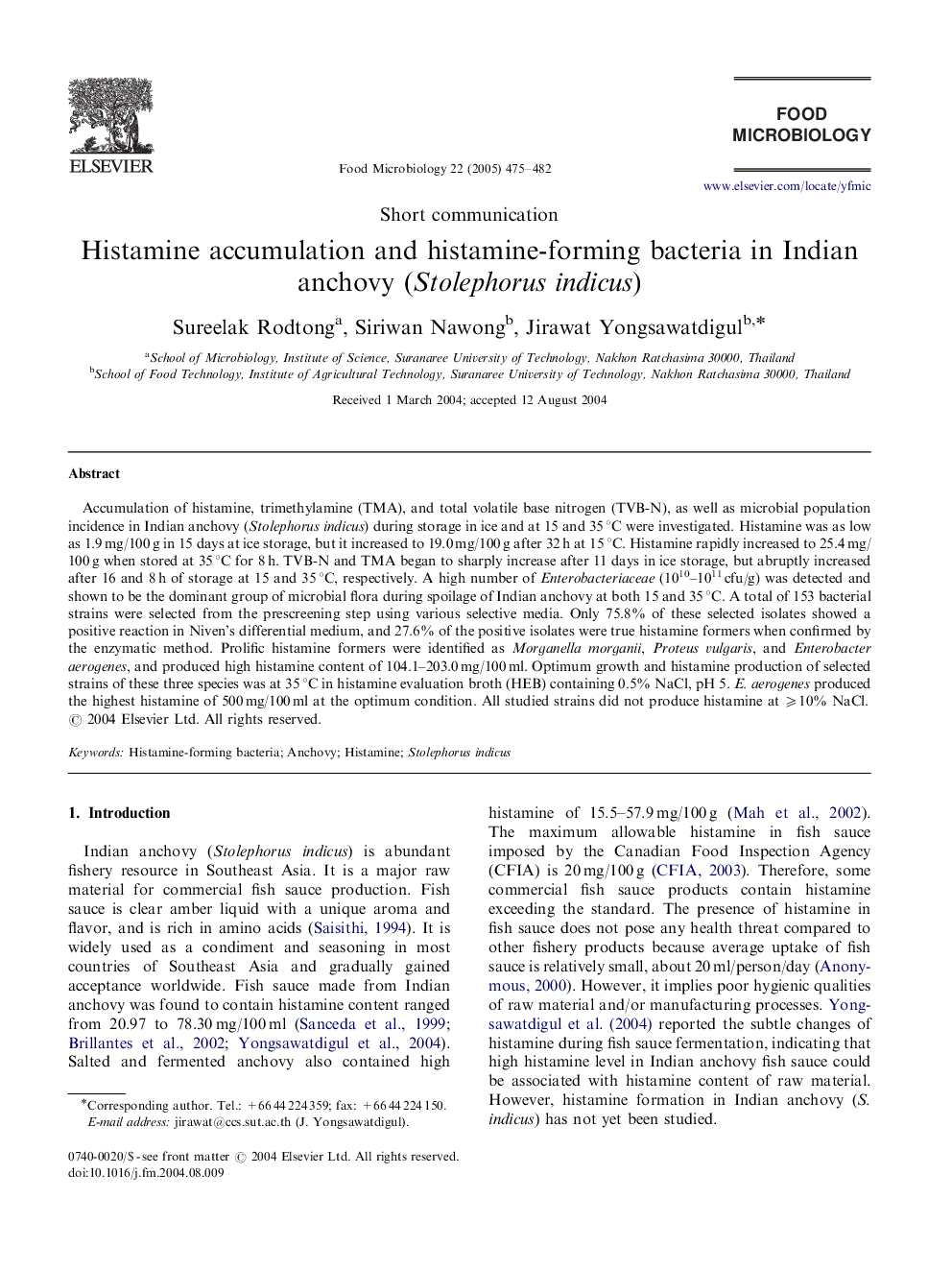| Article ID | Journal | Published Year | Pages | File Type |
|---|---|---|---|---|
| 9441891 | Food Microbiology | 2005 | 8 Pages |
Abstract
Accumulation of histamine, trimethylamine (TMA), and total volatile base nitrogen (TVB-N), as well as microbial population incidence in Indian anchovy (Stolephorus indicus) during storage in ice and at 15 and 35 °C were investigated. Histamine was as low as 1.9 mg/100 g in 15 days at ice storage, but it increased to 19.0 mg/100 g after 32 h at 15 °C. Histamine rapidly increased to 25.4 mg/100 g when stored at 35 °C for 8 h. TVB-N and TMA began to sharply increase after 11 days in ice storage, but abruptly increased after 16 and 8 h of storage at 15 and 35 °C, respectively. A high number of Enterobacteriaceae (1010-1011 cfu/g) was detected and shown to be the dominant group of microbial flora during spoilage of Indian anchovy at both 15 and 35 °C. A total of 153 bacterial strains were selected from the prescreening step using various selective media. Only 75.8% of these selected isolates showed a positive reaction in Niven's differential medium, and 27.6% of the positive isolates were true histamine formers when confirmed by the enzymatic method. Prolific histamine formers were identified as Morganella morganii, Proteus vulgaris, and Enterobacter aerogenes, and produced high histamine content of 104.1-203.0 mg/100 ml. Optimum growth and histamine production of selected strains of these three species was at 35 °C in histamine evaluation broth (HEB) containing 0.5% NaCl, pH 5. E. aerogenes produced the highest histamine of 500 mg/100 ml at the optimum condition. All studied strains did not produce histamine at ⩾10% NaCl.
Related Topics
Life Sciences
Agricultural and Biological Sciences
Food Science
Authors
Sureelak Rodtong, Siriwan Nawong, Jirawat Yongsawatdigul,
